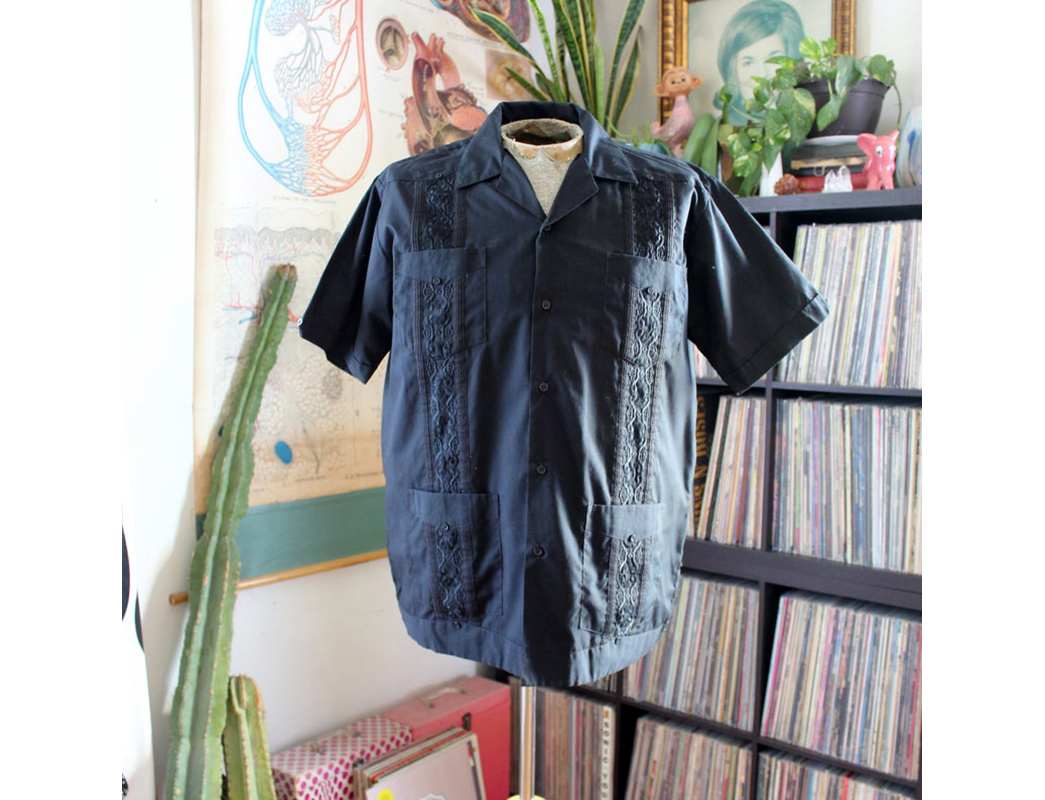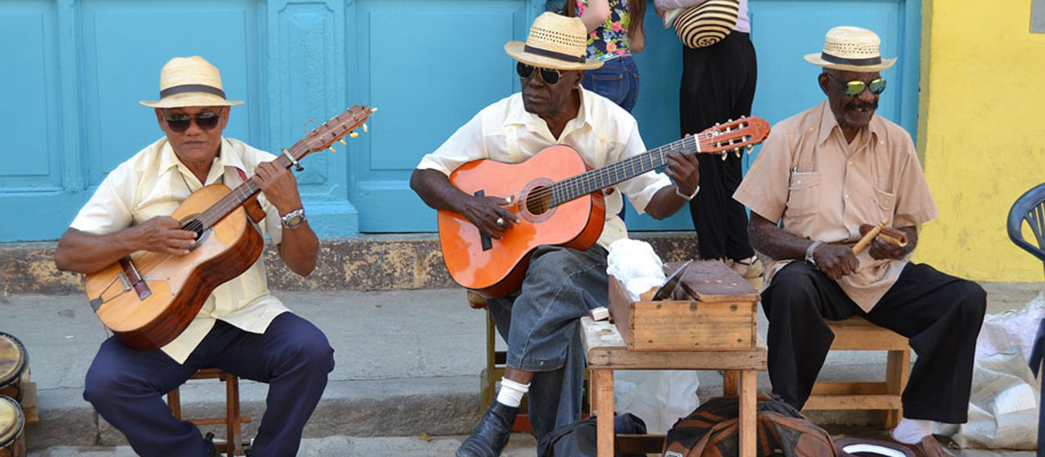- Heddels
- Posts
- May 29 - Guayabera History
May 29 - Guayabera History
Together with
Under the Guayabera Shirt - La Camisa de Yucatan
A South American classic with an elusive history, the Guayabera Shirt is one of the most compelling warm weather shirt styles.
Will Varnam

As we dive head first into the summer months, it’s the perfect time to think about your shirting situation. While the Hawaiian shirt is arguably the most notorious summer shirt, it’s far from your only choice. Another option at your disposal is the humble yet recognizable Guayabera.
Also known as the Camisa de Yucatán, guayaberas are designed for hot and humid climates, which has earned them popularity within Hispanic communities, namely Mexico, the Caribbean, Central, and South America. But, as we will see, the summertime staple also found its way to other regions.
Today, we’re going to delve into the contested origins of the guayabera, its features, how it’s worn, and the cultural significance of the garment.
Guayabera Origins

Cuban man wearing a long-sleeved guayabera via Wikipedia, and Ernest Hemingway wearing a guayabera via Art of Manliness.
The origins of the guayabera are hotly contested with no tale telling the same story. What seems to be agreed upon is that a few hundred years ago, a farmer’s wife took a needle and thread to her husband’s work shirt and added four large pockets to the front. This enabled her husband to easily pick and carry guayabas (guavas) when he was out in the field. This practical modification gave the shirt its commonly known moniker. However, past that, everything gets a little murky with a dozen Hispanic nations laying claims to the invention of the guayabera.
Some believe it originated in the Philippines before the arrival of the Spanish, having ties to the Barong Tagalog (or Barong or Baro) which is considered the national dress of the Philippines. A lightweight shirt often sheer and embroidered, scholars suggest the barong made its way to Cuba through Mexico via slave traders. Cubans, on the other hand, lay claim to the story of the worker and his wife, with references to the guayabera in Cuban literature as early as the 1890s.

KUON Twisted Pleat Guayabera Shirket White, available for $190 from Clutch Cafe.
However, another story that ties the origins of the shirt to Cuba is that of Spanish immigrants José Pérez Rodríguez and his wife, Encarnación Núñez García. They settled near the Yayabo River in Sancti Spiritus and it’s said that Jose asked his wife to make him a shirt with longer sleeves and four pockets (to store his cigars and belongings while he worked).
From there, because of the ease of construction and practical nature of the shirt, it quickly became a popular garment in the region. The shirt is also known as the camisa de Yucatán or Yucatán Shirt which aligns to a clearer line of evidence that the shirt originated from the Yucatan Peninsula in Mexico, with guayaberas being the traditional everyday men’s shirts in Yucatán since the mid-19th century, before they were replaced by western shirts in the early 20th century.
Regardless of the shirts true origin, its ties to Hispanic culture, history, and society are clear. It remains a mainstay and icon of Hispanic style, with guayaberas being worn for a variety of occasions and seen on a number of high-profile personalities including Fidel Castro.
/ In Partnership with Iron & Resin /
One of the first patterns humans ever produced is the centerpiece of Iron & Resin’s summer collection.
Broken twill herringbone fabric was the mainstay of the American Armed Forces in World War II and those same fatigues have inspired the styles of Iron & Resin’s Brigade Pant, Major Shirt, Military Jacket and more.
Start your summer at Iron & Resin.
Construction and Features

Detail of the pleats on a Monitaly Canul Manta guayabera Shirt in Natural (image via Stag Provisions)
The guayabera is certainly distinct, if nothing else. With its unmistakable pleats (also referred to as alforzas, pintucks, or tuxes) which run along the front and back of the shirt, it is a highly decorative garment. Traditionally, they’re seen with two pleats on the front and three on the reverse, and Mexican guayaberas often use complicated embroidery to highlight the alforzas.

Vintage guayabera. (Image via Aorta Apparel)
Some versions of the shirt also feature a back yoke which has a single point in the middle of the shoulders, making it look like a triangle aside from the three alforzas, resembling the Cuban flag. The guayabera also has several other notable features including: two or four patch pockets on the front of the shirt; decorative pocket detailing matching the alforzas on the shirt; matching shirt buttons at the top of each pocket; vertical rows of buttons at the bottom of the hem; a cuffed sleeve with a single decorative button; slits on either side of the shirt and a straight hem.
Short-sleeved versions are more common, but there are long-sleeve versions. The guayabera is meant to fit loosely and be worn untucked over the trousers. Traditionally worn in white and pastel colors, the palette of the garment is now much more diverse and colorful. Black guayaberas featuring eye-catching colorful flowers and French cuffs are popular in Mexico and often considered to be part of a formal outfit.

Vintage guayabera. (Image via Aorta Apparel)
Cotton and linen are the most commonly used fabrics to make high-quality guayaberas, with light and open weaves performing well in hot climates. Due to the iconic nature of the shirt, this has inevitably led to cheap imitations for the tourist trade, often made from low-cost and part-synthetic fabrics.

Soundman Havana Shirt, available for $245 from Clutch Cafe.
Styling and Wear

Ernest Hemmingway helping Gary Cooper put on a Guayabera, via Bigcommerce.
Highly detailed and ornamented, the guayabera may seem a bold choice, but it’s a garment which has been worn for generations in many different settings. It’s a far more versatile piece than you might expect, which has been paired with pretty much everything over the years. It’s also a shirt that suits the young, old, and everyone in between. However, the styling and environment in which the shirt is worn can differ between countries and cultures.
In the US, the guayabera is often worn as a casual shirt in warmer weather, without a jacket. Both decorative and plain examples are a common sight in southern cities like Miami. However, the guayabera is more commonly worn in Hispanic communities for more formal occasions including offices/business, weddings, or political events. At Mexican weddings, for example, the guayabera is worn in either long or short-sleeved versions and the vertical pleats are often embroidered in more than one color, with the base color being black, white, or bright pastel colors.

Gitman Bros. Vintage Seersucker Guayabera Shirt, available for $235 from STAG.
A number of countries including Cuba, the Dominican Republic, and Mexico have made the guayabera part of their traditional dress and formalwear. Cuba even went as far as to reinstate the garment as the “official formal dress garment” in 2010.
Harkening back to the origins of the shirt and its practical application, the guayabera is also used in a workwear context. It’s traditionally made in light colors to reflect the heat of the sun and a loose weave fabric to allow circulation and breathability, with four pockets to carry personal belongings or freshly picked guayabas. In contrast, due to the iconic nature of the shirt, it is a popular tourist garment often seen in bright colors with eye-catching designs or embroidery. The Latin American version of the Hawaiian if you will. As mentioned earlier, these guayaberas are often made from cheaply made synthetic fabrics and are a far cry from the handmade and highly decorative authentic guayabera.

Cuban street musicians wearing guayaberas (Image via My Cuban Store)
Some cultures also have their own specific criteria for guayaberas in a formal dress setting. For example, Zimbabwe adopted the garment from Cuban teachers and missionaries who visited Africa and it is now typical to wear a white short-sleeved guayabera with black trousers at weddings or a black short-sleeved example at funerals.
Cultural Significance and Symbolism

Fidel Castro in a Guayabera Shirt via Telesurv.
The guayabera has become not only an icon of Hispanic style but also a representation of Hispanic culture and society. The shirt has been worn by foreign politicians, arguably showing affiliation with populist political positions or solidarity with Hispanic society.
Jamaican Prime Minister Michael Manley even advocated for the guayabera as an anti-colonialist style of dress, but the garment was later banned in Parliament by the Jamaica Labour Party. Similarly, in Mexico, some populists wore the shirt as a symbol of rejection of traditional European and American style suiting. The guayabera is often gifted by Hispanic politicians to foreign diplomats as a cultural offering.

Former president of Argentina, Alberto Fernández, and president of Mexico, Andrés Manuel López Obrador, wearing Guayaberas.
The guayabera has also made it into the wardrobe of celebrities and movie stars including Robert De Niro, Robert Duvall, and Alonzo Mourning. Ernest Hemingway famously wore a guayabera made by Ramon ‘the King of the guayabera’ Puig, who opened his first guayabera store in Cuba in 1943.
Known as a legend within the world of the guayabera, Puig gained a reputation for producing high-quality authentic garments which were worn by politicians and presidents. Stating that “you wouldn’t smoke fake Cubans (cigars) so why would you wear a bogus guayabera?”, he advocated true craftsmanship and authenticity when it came constructing the iconic shirt.
While the true origins of the guayabera may never be known (or proven), its impact is clear and far-reaching. More than a cultural icon within the Hispanic community, the garment’s recognition is international. It’s been tried and tested over generations and generations but has changed very little, a testament to its utilitarian and stylish profile.

Gitman Bros. Vintage Chambray Guayabera Shirt, available for $250 from STAG.
Like this? Read these:
What did you think of today's newsletter? |



